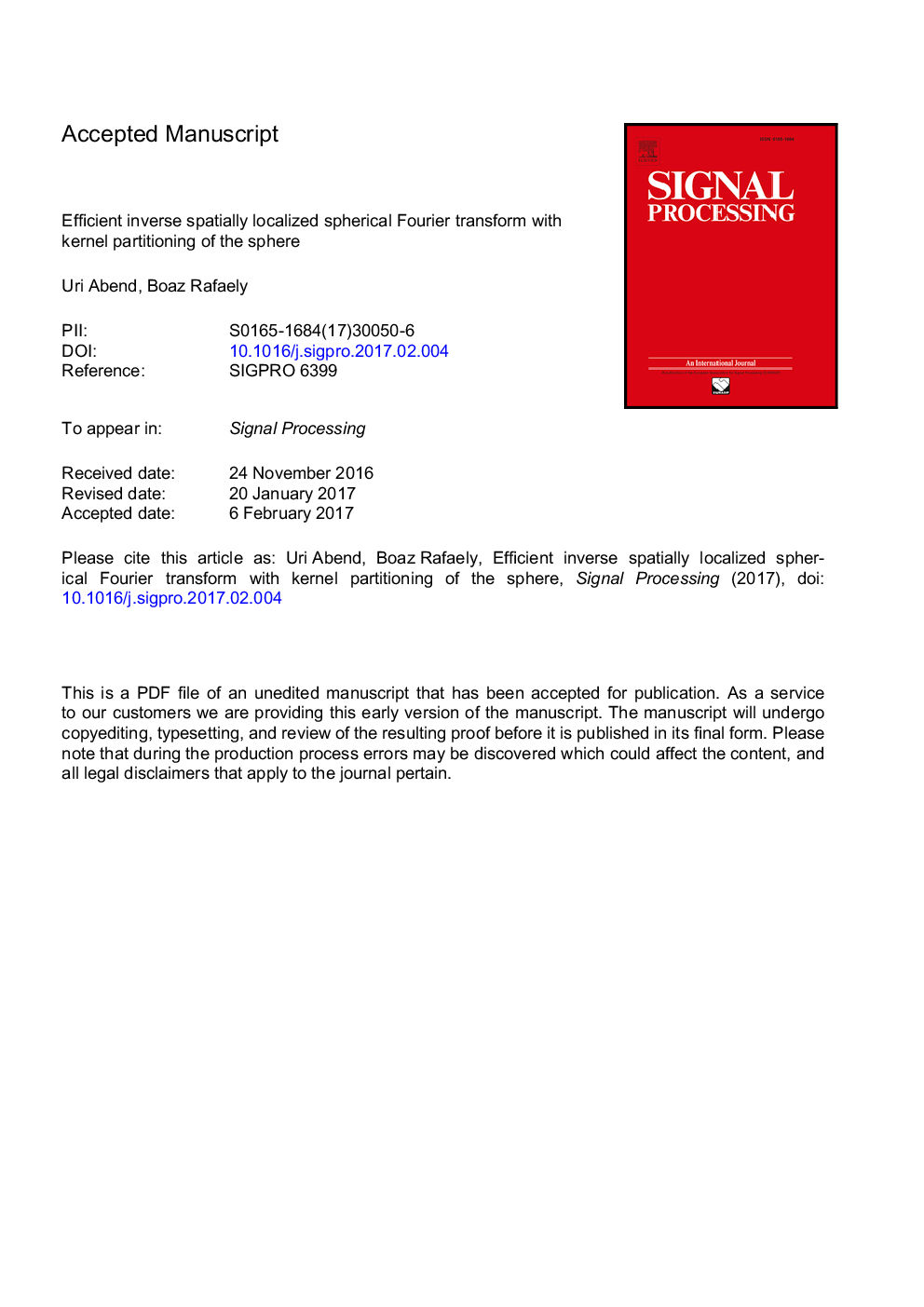| Article ID | Journal | Published Year | Pages | File Type |
|---|---|---|---|---|
| 4977670 | Signal Processing | 2017 | 12 Pages |
Abstract
The spatially localized spherical Fourier transform has been studied for various applications in recent years. One of the main arguments of the transform is the window function, typically selected to provide localization in space and to enable spectral analysis of specific parts of the sphere. In the discrete formulation of the transform, window functions with a finite spherical harmonics order are used. However, this imposes a constraint, as a high-order window leads to a high number of sampling points on the sphere in order to facilitate inversion of the transform without errors. In this work, a novel method for designing window functions is proposed, with the aim of removing the sampling constraint and, therefore, reducing the number of sampling points on the sphere, while retaining a high order for the window. This is achieved by projecting the window design to a subspace that constrains the sum of all rotated windows to be a constant function on the sphere. The method is formulated mathematically and validated by simulations, which demonstrate its performance and limitations.
Keywords
Related Topics
Physical Sciences and Engineering
Computer Science
Signal Processing
Authors
Uri Abend, Boaz Rafaely,
